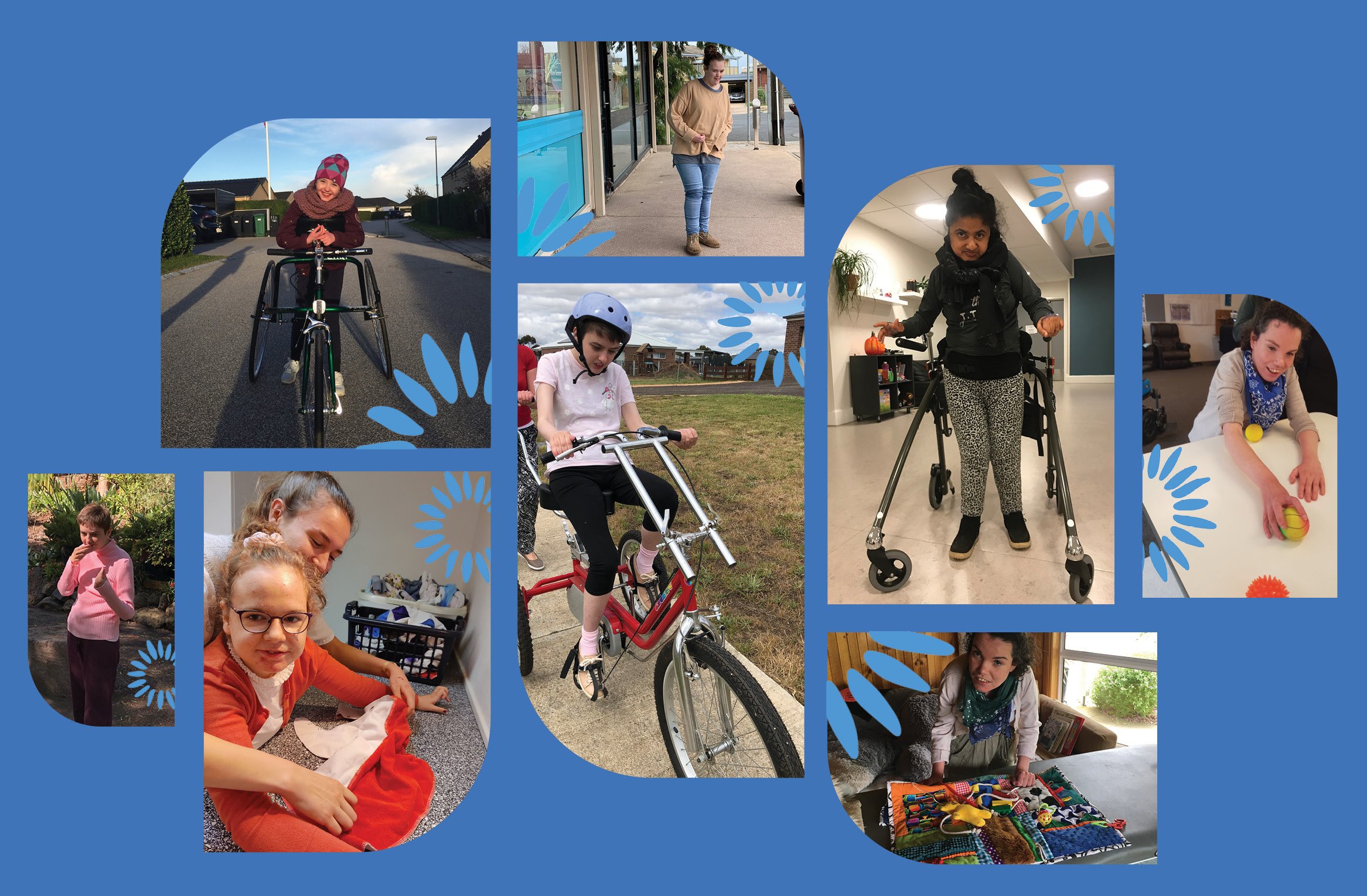The World Health Organisation (WHO) have created Guidelines on Physical Activity and Sedentary Behaviour, with sections especially for children and adolescents (5-17 years), and adults (18+ years) living with a disability.
This section explains how those guidelines apply to people with Rett syndrome. One size won’t fit all, because different individuals with Rett syndrome have very different abilities. Each family needs to select the appropriate types and levels of activity that suit their own individual needs and circumstances.
Look for opportunities
Physical activity opportunities can be found in nearly all settings and nearly all times of day. Opportunities include during:
- recreation and leisure (play, games, sports or planned exercise),
- physical education and sport,
- transportation (wheeling, walking and cycling), and
- household chores.
Physical activity can be done in indoors and outdoors in all settings, including home, school, daycare, occupational settings, shopping centres, parks, and beaches.
You can download a document to help you plan opportunities for uptime by clicking on this link.
WHO Good practice statements
These good practice statements are applicable to people of all abilities:
- Doing some physical activity is better than doing none.
- If children, adolescents, or adults living with disability are not meeting the WHO recommendations (below), doing some physical activity will bring benefits to health.
- Children, adolescents, and adults living with disability should start by doing small amounts of physical activity and gradually increase the frequency, intensity and duration over time.
- There are no major risks for children, adolescents, or adults living with disability engaging in physical activity when it is appropriate to an individual’s current activity level, health status and physical function; and the health benefits accrued outweigh the risks.
- Children, adolescents, and adults living with disability may need to consult a health-care professional or other physical activity and disability specialist to help determine the type and amount of activity appropriate for them.
WHO recommendations for amount of physical activity per day
For children and adolescents with disability, WHO recommends:
- at least 60 minutes per day of moderate to vigorous-intensity physical activity.
- vigorous-intensity aerobic activities and activities that strengthen muscle and bone at least 3 days a week.
For adults with disability, WHO recommends:
- regular physical activity.
- at least 150 minutes of moderate intensity aerobic physical activity per week.
- muscle-strengthening activities on 2 or more days a week.
For older adults with disability, WHO recommends:
- physical activity that emphasizes functional balance and strength training on 3 or more days a week, to enhance functional capacity and prevent falls.
Many individuals with Rett syndrome cannot manage this much activity. But for all people with Rett syndrome, doing more is always good. Small increases in standing, walking, and other physical activities will benefit adults, especially if they are sedentary. Small moments add up to large gains over time.

